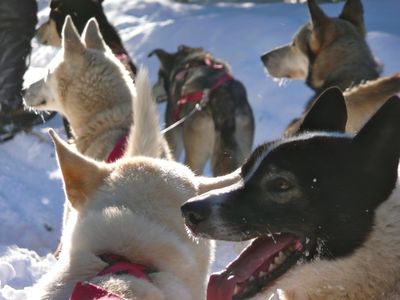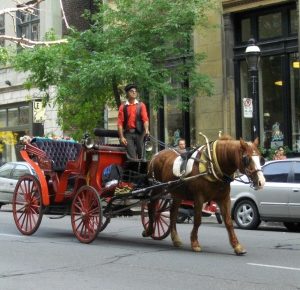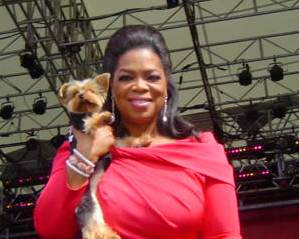
The Iditarod Dog Sled Race has been called the last great dog sled race. It covers 1,131 miles beginning in Anchorage, Alaska with a ceremonial start and ending in Nome. The official start is in Willow and the race is run yearly beginning on the first Saturday in March since 1973.
Competition is high and although race contestants are mainly from Alaska, participants can join in from anywhere in the world. The Iditarod is the most popular sporting event in Alaska attracting mushers with their dogs.
The teams face grueling conditions through mainly unpopulated areas and often drive through blizzards, gale-force winds, temperatures well below freezing. There is a northern route run in even years and a southern route run in odd years. The northern route has 26 checkpoints and the southern route has 27.
The race is named for the Iditarod Trail, one of four National Historic Trails. The town of Iditarod was once an Athabaskan village, a Native American tribe. The name of the race is derived from the Athabaskan word, “haitarod” which means “far distant place.” For hundreds of years the trail was used by Native Americans (Athabaskan and Inupiak peoples). The race still passes through the town, once a thriving mining center.
The idea of the Iditarod was conceived by Dorothy G. Page and there is a museum in Wasilla (Sarah Pallin’s home) honoring her. Following up on the idea, Joe Reddington Sr. along with schoolteachers, Gleo Huyck and Tom Johnson, co-founded the race in October of 1972 with the first race run in 1973.
Two women have won the Iditarod – Libby Riddles in 1985 and Susan Butcher in 1986, going on to win 4 out of 5 sequential years. John Baker holds the fastest winning time. Baker set the record in 2011 with a time of 8 days, 19 hours, 46 minutes and 39 seconds. Rick Swenson, born in Minnesota, holds the unequaled record of winning the Iditarod 5 times, 1977, 1979, 1981, 1982 and 1991.
The original sled dogs were bred by the Mahlemuit tribe and were one of the earliest domesticated breeds. Later they were crossbred with Alaskan Huskies, hounds, setters, spaniels, German Shepherds and wolves. Siberian Huskies became the most popular breed when introduced in the 20th century.
Since 1984 veterinarians or nurses examine the dogs before the race, checking eyes, teeth, tonsils, heart, lungs, joints and genitals. All dogs must have microchips and collar tags. Dogs are disqualified from entering the race if there are signs of drugs such as steroids, stimulants, muscle relaxants, anti-inflammatories, sedatives, wounds improperly healed or pregnancy. Volunteer veterinarians recheck the dogs at each checkpoint. In addition to the other checks, they look for any signs of illness or injury.
Teams are made up of 12 to 16 dogs. At least 6 dogs must be in harness at the finish line. Dogs begin training in late summer or early fall and continue training until the race.
An interesting fact about the use of sled dogs: In 1925 the city of Nome was threatened by a diptheria epidemic. The only antitoxins available were in Anchorage, With only 2 planes which were in no condition to fly, it was left to 20 mushers and more than a 100 dogs working in relays to deliver the 20 lb. cylinder of diptheria serum from Nenana (where it arrived by train) to Nome. Each dog was allowed to run no more than 100 miles. Gunnar Kaasen, a Norwegian, and his dog Balto arrived in Nome five days after leaving Nenana. A statue of Balto honoring his stands in New York City’s Central Park.
The Iditarod has received much criticism from animal rights groups. The ASPCA said,”General concerns arise whenever intense competition results in dogs being pushed beyond their endurance and capabilities.” The only years when no dog died were the 2010 and the 2011 Iditarods.
See our article on Sled Dogs.



